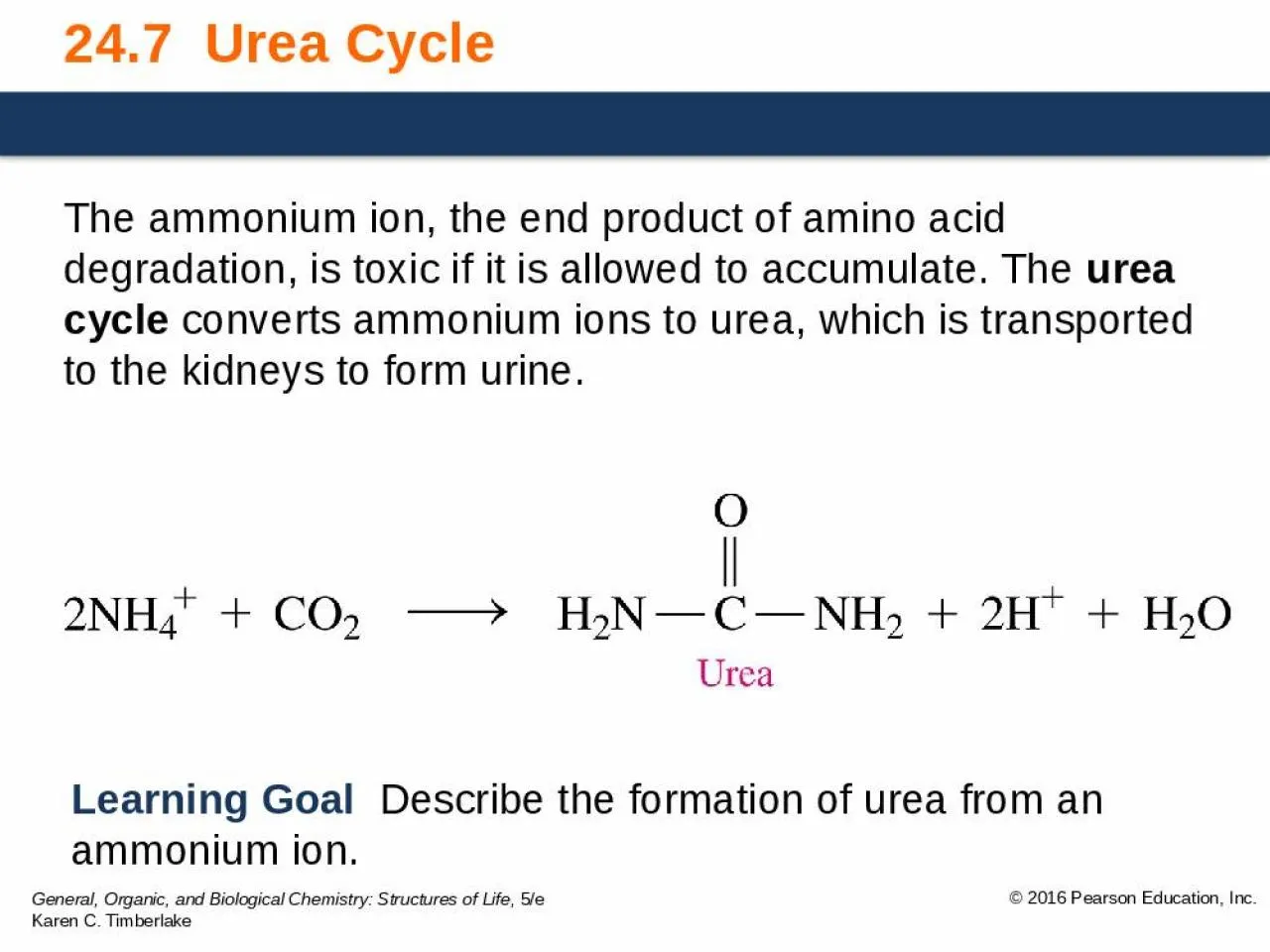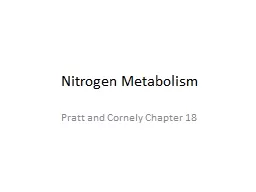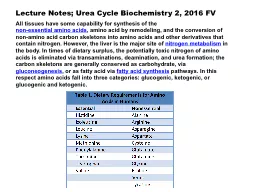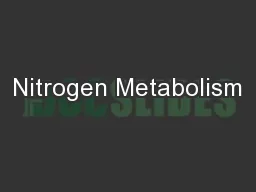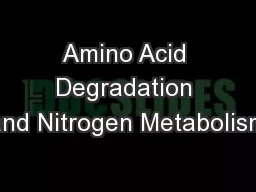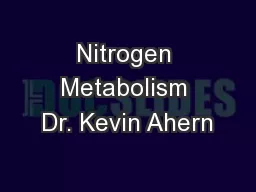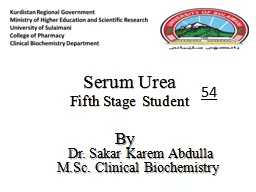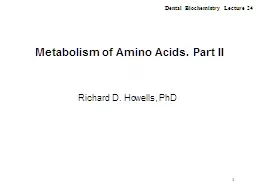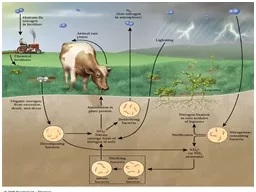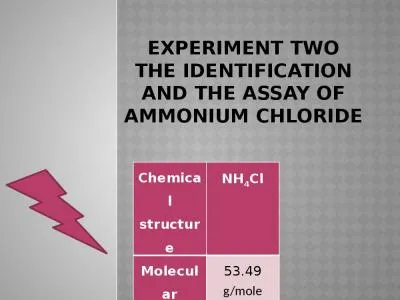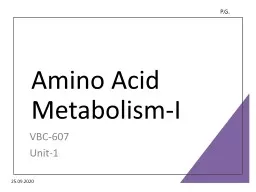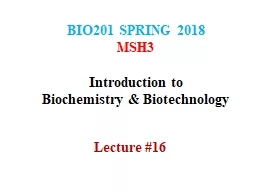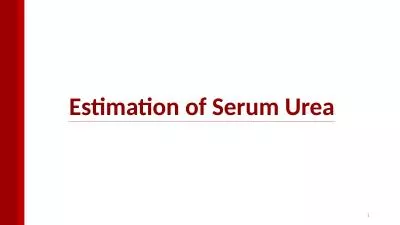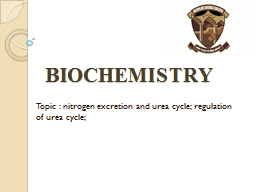PPT-24.7 Urea Cycle The ammonium ion, the end product of amino acid degradation, is toxic
Author : murphy | Published Date : 2022-05-14
urea cycle converts ammonium ions to urea which is transported to the kidneys to form urine Learning Goal Describe the formation of urea from an ammonium ion
Presentation Embed Code
Download Presentation
Download Presentation The PPT/PDF document "24.7 Urea Cycle The ammonium ion, the e..." is the property of its rightful owner. Permission is granted to download and print the materials on this website for personal, non-commercial use only, and to display it on your personal computer provided you do not modify the materials and that you retain all copyright notices contained in the materials. By downloading content from our website, you accept the terms of this agreement.
24.7 Urea Cycle The ammonium ion, the end product of amino acid degradation, is toxic: Transcript
Download Rules Of Document
"24.7 Urea Cycle The ammonium ion, the end product of amino acid degradation, is toxic"The content belongs to its owner. You may download and print it for personal use, without modification, and keep all copyright notices. By downloading, you agree to these terms.
Related Documents

